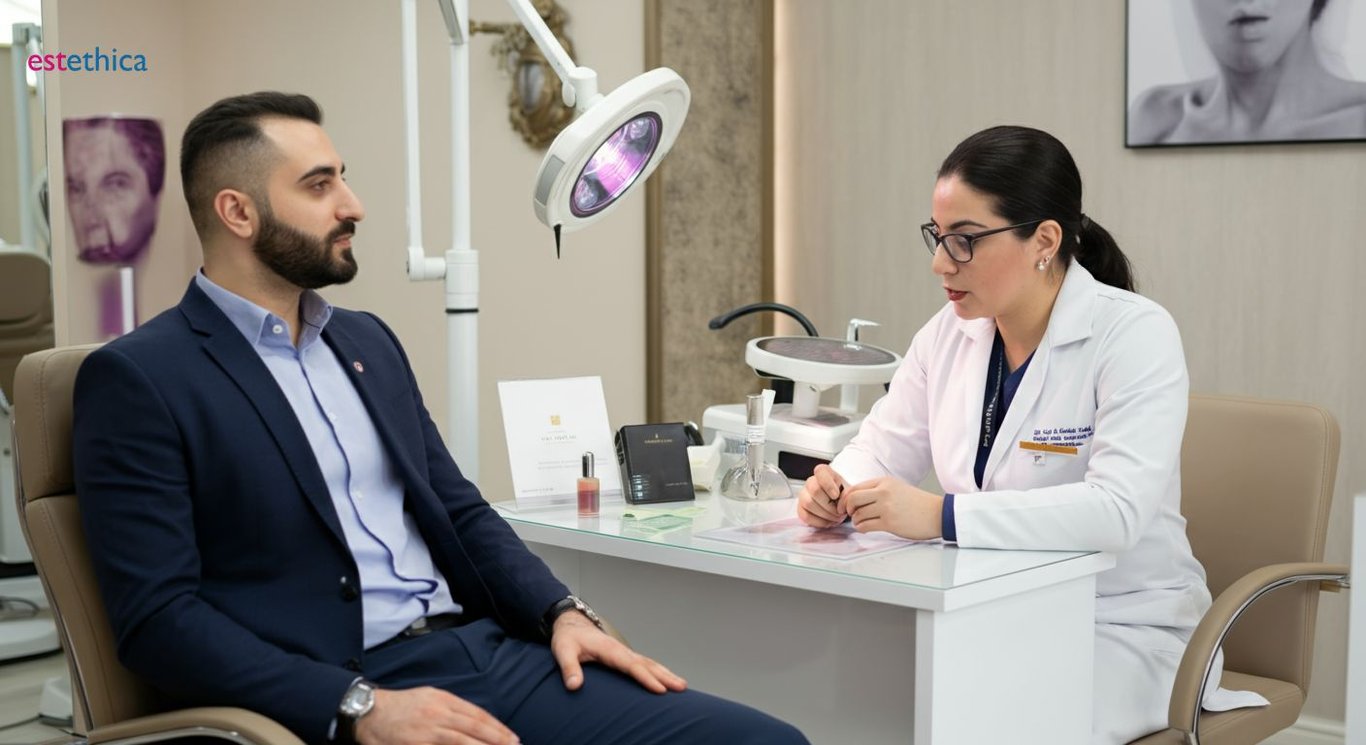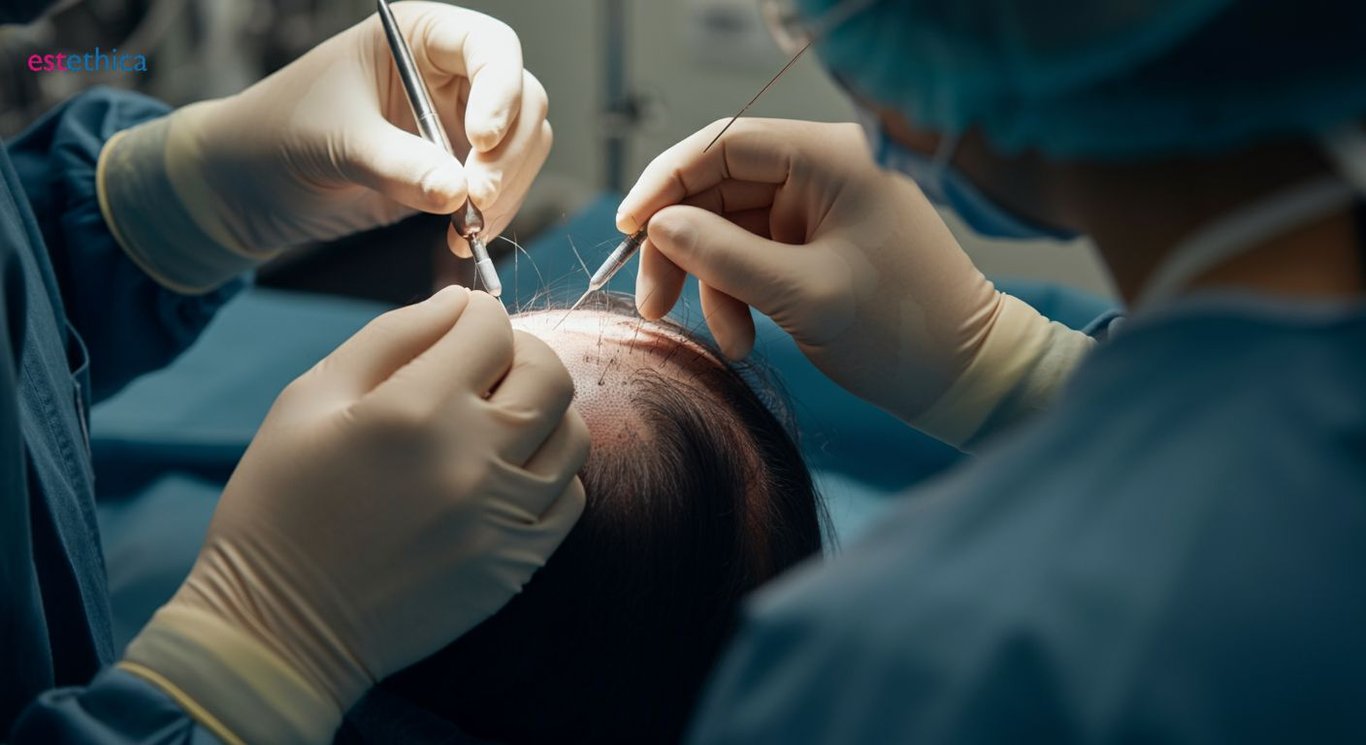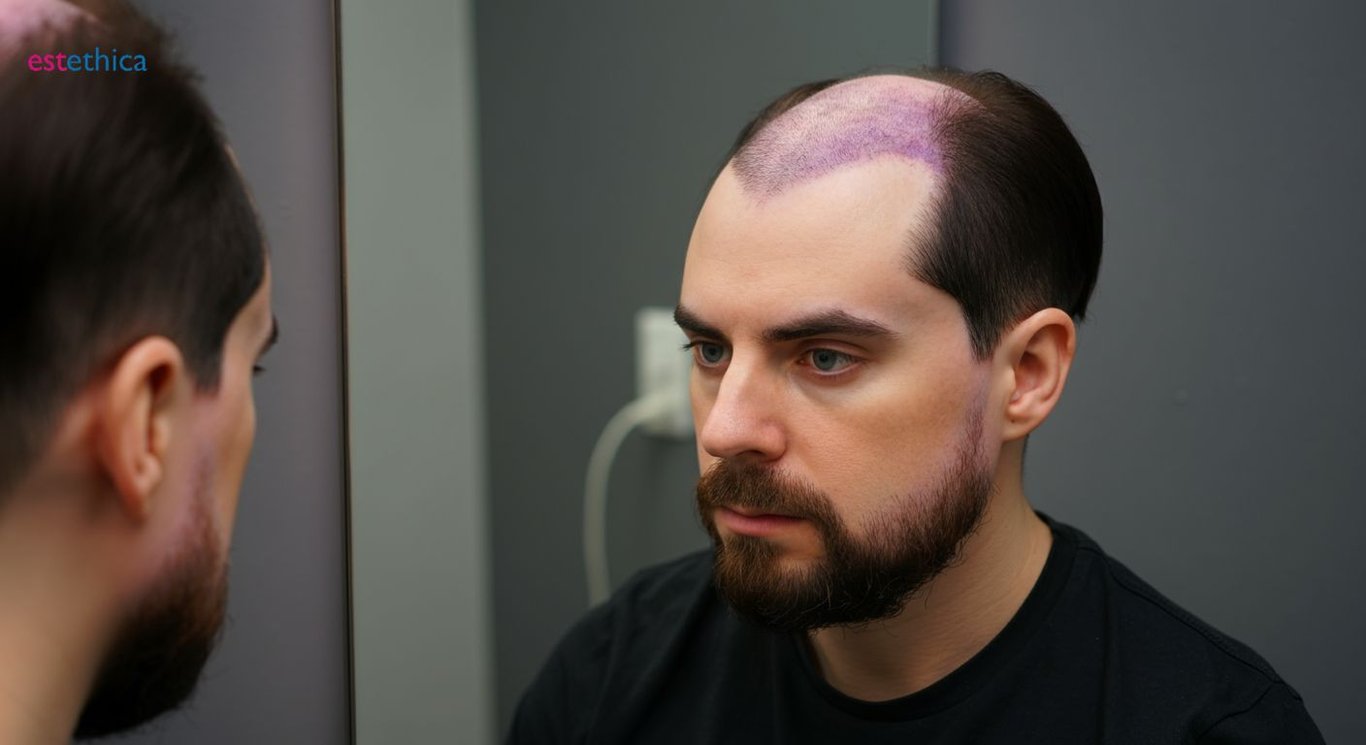Unlocking Hair Transplant Success: Expert Insights
Unlock the secrets to successful hair transplants with expert insights into techniques and recovery processes.
Hair transplantation has emerged as a revolutionary solution for individuals facing hair loss. Leveraging advanced medical techniques, it offers a chance to regain hair density and restore self-confidence. Let's dive into the intricacies of hair transplant techniques, the recovery process, and the benefits of scalp micropigmentation.
Understanding Hair Transplant Techniques
Exploring the Benefits of DHI and FUE Techniques
Hair transplantation has advanced with techniques like DHI and FUE, each offering unique benefits. The DHI Technique is notable for its ability to insert hair follicles without prior channel opening, which significantly reduces recovery time and minimizes scarring. This method is ideal for those seeking a quick recovery and less visible signs of surgery.
On the other hand, the FUE Technique is renowned for its precision in extracting individual follicles, making it suitable for achieving a natural hairline. This method is particularly beneficial for individuals aiming for a seamless integration of transplanted hair with their existing hair.
Key Advantages of Hair Transplant Techniques
- Reduced recovery time with DHI, allowing for a quicker return to daily activities.
- Minimal scarring with both techniques, enhancing aesthetic outcomes.
- Natural-looking results with FUE, ideal for hairline restoration.
These techniques cater to different needs, ensuring personalized solutions for hair restoration. For more insights into hair transplant options, consider exploring this comprehensive guide.
Understanding Hair Transplant Costs
- Initial consultation to assess individual needs and determine the suitable technique.
- Procedure planning, including the number of grafts required and expected outcomes.
- Post-procedure care and follow-up to ensure optimal recovery and results.
While the cost of hair transplant procedures can vary, factors such as the technique used and the clinic's reputation play a significant role. It's essential to choose a reputable clinic to ensure the best outcomes.

Navigating Hair Transplant Recovery
Understanding the Recovery Process for Different Techniques
Recovery from hair transplant surgery, whether it's a FUE hair transplant or a DHI procedure, varies significantly. The DHI method, known for its incision-free approach, typically allows for a faster recovery. Patients often find themselves resuming normal activities sooner, thanks to the minimal trauma involved. In contrast, the FUE technique, while precise, may require a slightly longer recovery period due to the individual extraction of follicles.
Essential Post-Operation Care Tips
- Use specialized products like estethica’s gold cream to promote healing and reduce inflammation.
- Avoid direct sunlight and strenuous activities to protect the scalp.
- Follow a gentle hair care routine to maintain the health of transplanted follicles.
These care tips are crucial in ensuring that the transplanted hair grafts settle well and begin to grow naturally, contributing to successful hair restoration.
Steps to Ensure a Smooth Recovery
- Adhere to the post-operative instructions provided by your surgeon.
- Attend all scheduled follow-up appointments to monitor progress.
- Maintain a healthy diet to support hair growth and recovery.
By following these steps, patients can enhance their recovery experience and achieve optimal results from their hair transplant surgery.

Evaluating Hair Transplant Success Rates
Factors Influencing Hair Transplant Success
Success in hair transplants hinges on multiple factors, including the chosen technique, the patient's health, and diligent post-operative care. Techniques like Direct Hair Implantation (DHI) are renowned for their precision, offering controlled and natural results. This method enhances the overall success rate by minimizing trauma to the scalp and ensuring a higher survival rate of transplanted follicles.
Patient health plays a crucial role in the success of hair restoration. Individuals with good overall health and no underlying scalp conditions tend to experience better outcomes. Additionally, adherence to post-operative care instructions significantly impacts the success of the procedure. Proper care ensures that the transplanted hair grafts settle well and begin to grow naturally.
Key Elements for Successful Hair Transplants
- Selection of an experienced surgeon to perform the procedure.
- Use of advanced techniques like DHI for precise results.
- Commitment to post-operative care and follow-up appointments.
These elements are critical in achieving a successful hair transplant, ensuring that patients enjoy long-lasting and natural-looking results.
Understanding the Impact of Technique on Success
- Technique Selection: Choosing between DHI and FUE based on individual needs.
- Procedure Execution: Ensuring meticulous execution by a skilled professional.
- Post-Procedure Care: Following a tailored care plan to support recovery and growth.
By understanding these factors, patients can make informed decisions about their hair transplant surgery, leading to higher satisfaction and improved outcomes.

Exploring Scalp Micropigmentation Benefits
Understanding the Technique and Its Advantages
Scalp micropigmentation (SMP) is a cutting-edge non-surgical technique that offers an innovative solution for hair restoration. Unlike traditional hair transplant surgery, SMP involves tattooing tiny dots on the scalp to mimic the appearance of hair follicles. This method provides immediate results, enhancing the aesthetic appeal of individuals experiencing hair thinning or baldness.
The technique is particularly beneficial for those who may not be ideal candidates for hair transplant surgery due to insufficient donor hair. By creating the illusion of fuller hair, SMP can significantly boost confidence and self-esteem. Additionally, the procedure is minimally invasive, requiring no downtime, which is a stark contrast to the recovery time associated with surgical options like follicular unit extraction (FUE).
Key Benefits of Scalp Micropigmentation
- Immediate visual improvement, providing a fuller hair appearance.
- Non-surgical and minimally invasive, eliminating the need for recovery time.
- Suitable for individuals with limited donor hair, offering a viable alternative to hair grafting.
These benefits make scalp micropigmentation an attractive option for those seeking a quick and effective hair restoration solution without the complexities of surgery.
The Process of Scalp Micropigmentation
- Consultation: Assessing the client's needs and desired outcomes.
- Design: Creating a tailored plan to achieve a natural look.
- Application: Tattooing the scalp with precision to mimic natural hair follicles.
This structured approach ensures that each client receives a personalized treatment, resulting in a natural and aesthetically pleasing outcome. By understanding the process and benefits of scalp micropigmentation, individuals can make informed decisions about their hair restoration options.
Innovative Hair Transplant Techniques: DHI and FUE
Excellence in Hair Transplant Recovery
Frequently Asked Questions
What are the main techniques used in hair transplant surgery?
How does scalp micropigmentation differ from traditional hair transplants?
What factors influence the success rate of hair transplants?
What should I expect during the recovery period after a hair transplant?
Are hair transplant results permanent?
Discover the path to 'Healthy Beauty' with estethica's expert care. Call now for your free consultation and take the first step towards a more confident you!
📞 Call for Your Free Consultation